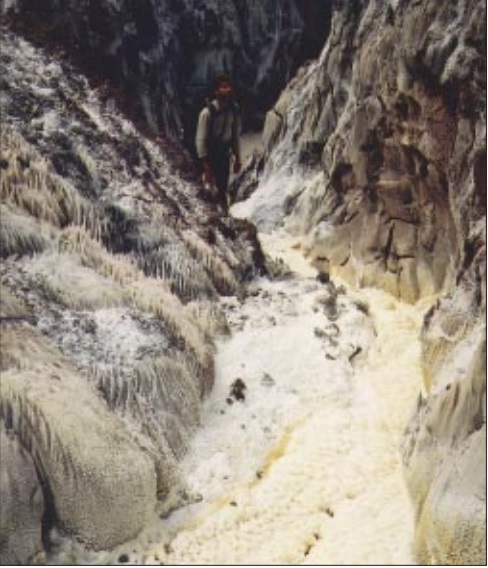Thickness of Cap Rock and Other Important Factors Affecting the Morphogenesis of Salt Karst
DOI:
https://doi.org/10.3986/ac.v29i2.448Povzetek
Debelino krovnine je mogoče razporediti v 4 razrede. Za vsakega so značilne posebne površinske in podzemeljske kraške oblike: 1. solni izdanki; 2. tanka krovnina (0,5 - 2 m); 3. zmerno debela krovnina (5 - 30 m); 4. zelo debela krovnina (preko 30 m). Najpomembnejši dejavniki, na katere vpliva debelina krovnine, so: gostota mest, skozi katera prodira voda; količina vode, ki ponika na posameznem mestu; hitrost zniževanja površja solnega telesa; »korozijska« sposobnost vode in velikost ter količina tovora, ki ga prenašajo podzemeljske poplavne vode. Debelina krovnine nad jamo ne vpliva neposredno na jamo. Kaže, da je bolj pomembna debelina kamnine v njenem zaledju in tip dotoka na solno telo. Drugi pomemben dejavnik je debelina krovnine v smislu teže, ki je obratnosorazmerna z udiranjem. Široki rovi v nekaterih jamah so nastali zaradi odlaganja sedimenta v strugi, kar je prisililo vodo, da je tekla vzdolž sten in jih tako pospešeno korodirala v pasu, visokem nekaj decimetrov.
Four classes of different thickness of cap rock can be distinguished, each with its special superficial and underground karst forms: 1. salt outcrops, 2. thin cap rock (0,5-2 m), 3. cap rock of moderate thickness (5-30 m), 4. cap rock of great thickness (more than 30 m). The most important factors affected by cap rock thickness are as follows: the density of recharge points, the amounts of concentrated recharge which occur at each recharge point, the rate of lowering the ground surface of salt karst, the dissolution capacity of water and the size and amount of load transported by underground flood-streams into cave systems. The thickness of cap rock above the cave does not influence the cave itself; more important seems to be the thickness of cap rock in the recharge area of the cave and the type of recharge into the salt environment. Another important factor is the thickness of overburden above the cave, which negatively correlates with intensity of breakdown. Wide passages in some caves are developed as result of intensive deposition of bedload, which expel the stream into the side of the passage and are due to enhanced corrosion in the few decimetres high zone above the bottom of passage.
Prenosi

Prenosi
Objavljeno
Kako citirati
Številka
Rubrike
Licenca
Avtorji jamčijo, da je delo njihova avtorska stvaritev, da v njem niso kršene avtorske pravice tretjih oseb ali kake druge pravice. V primeru zahtevkov tretjih oseb se avtorji zavezujejo, da bodo varovali interese založnika ter da bodo povrnili morebitno škodo.
Podrobneje v rubriki: Prispevki




